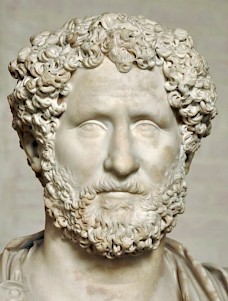Pausanias
Pausanias (c.125-c.180?): Greek author, writer of a Description of Greece.

No text has had more influence on the development of the study of classical archaeology than the Description of Greece by Pausanias. He was probably born c.125 in Lydia and wrote his travel guide between 155 and 180. The author takes us on a tour trough the mainland of Greece, and describes all buildings of some importance. He must have been a rich man, who had access to a large library and had sufficient leisure to travel. We are fortunate that he did so after the building boom at the beginning of the second century and before the economic crisis of the third century.
The contents of the ten books:
- Attica (includes Athens)
- Corinth and the Argolid
- Laconia (includes Sparta)
- Messenia
- Elis
- Elis
- Arcadia (includes Olympia)
- Achaea (includes Olympia)
- Boeotia
- Phocis (includes Delphi)
Pausanias has a serious interest in the cults of the Greek countryside, which were in his age in the process of being slowly replaced by oriental religions. His often melancholic Description of Greece is therefore not only a treasury for classical archaeologists, but also for students of ancient religion.
Literature
- Johanna Akujärvi, Researcher, Traveller, Narrator: Studies in Pausanias' Periegesis (Stockholm, 2005)
- Maria Pretzler, Pausanias. Travel Writing in Ancient Greece (London 2007)